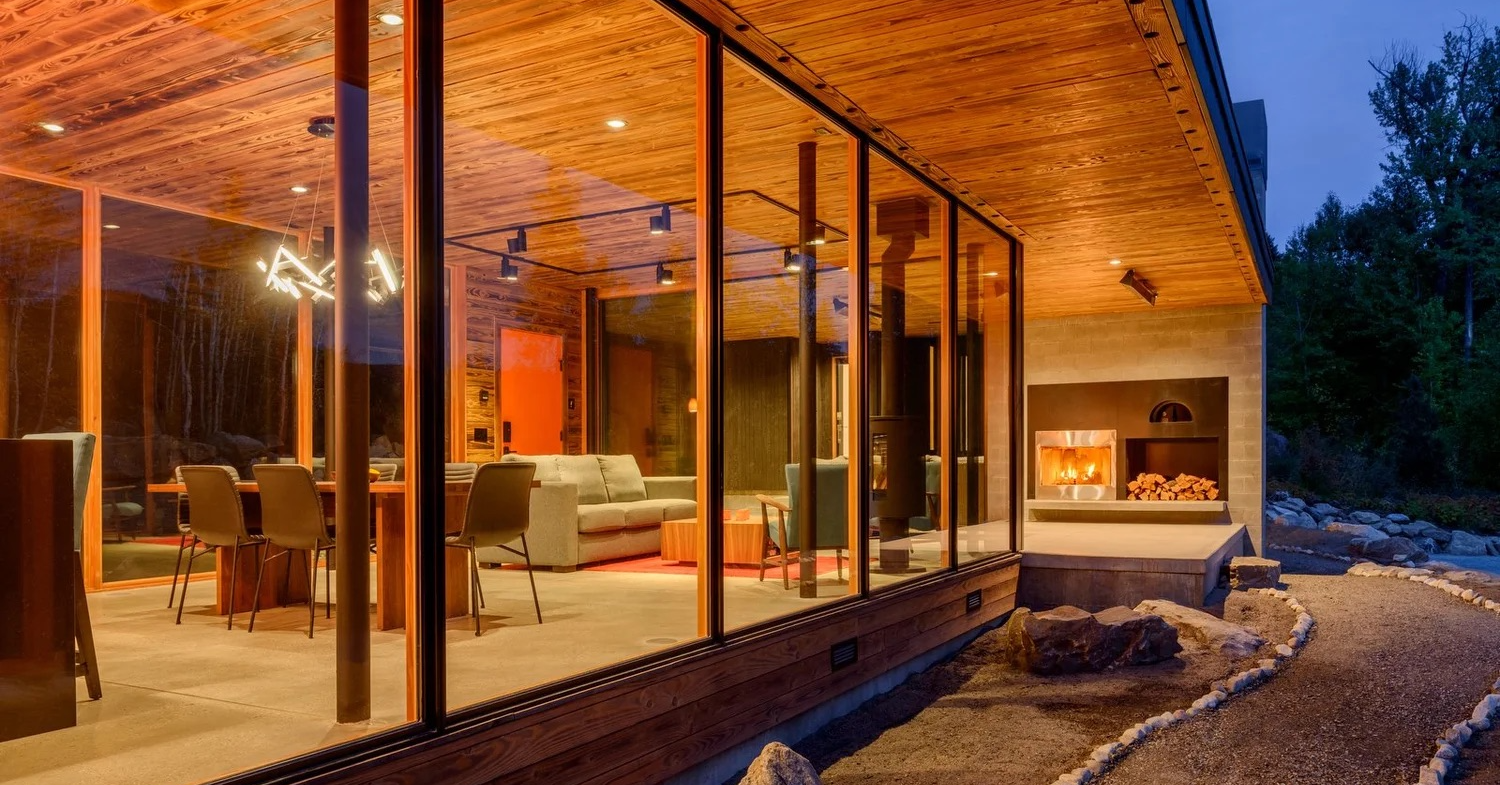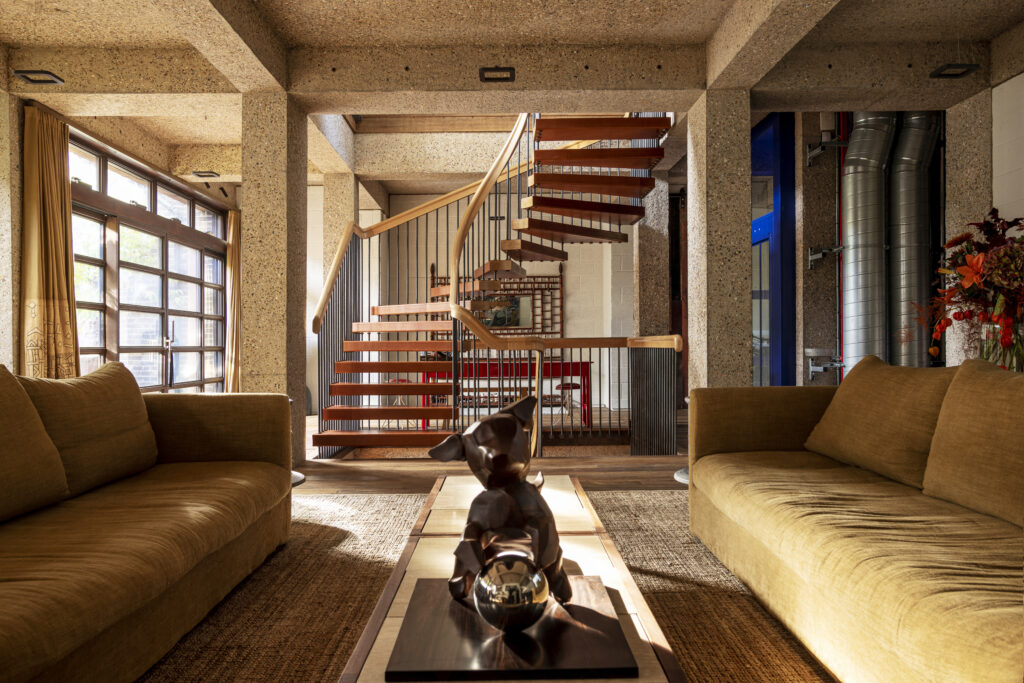Estudio ALA expands mezcal distillery in Mexican agave fields


Laminated timber beams and grey brick form the expansion of an artisanal mezcal production facility in Michoacan, Mexico, by local practice Estudio ALA.
Estudio ALA designed the extension to an existing facility that produces small batches of mezcal – a liquor made from the agave plant, similar to tequila but with a distinctive smokey flavour.

The building – known as a palenque – is located amongst the agave fields and adds a larger production area, worker dining areas, recreational spaces and more, arranged in a long linear format.
"Traditional mezcal distilleries tend to be smaller in scale," Estudio ALA said. "We sought to avoid the lack of human scale and the monumentality found in industrial spaces."

The new cross-laminated timber structure forms a truss that supports offset, overlapping pitched roofs, while the sides were left open.
Two distinct areas are defined by a change in level where the roof planes meet, and accommodate different stages of the production process.

"Through a series of platforms, we sought to establish a relationship between the building and the existing topography, integrating it into the landscape and enhancing the experience for workers and visitors," said Estudio ALA.
Once the agave is harvested, the heart of the plant called piña is roasted in underground pit ovens, then crushed to extract the juice.

This liquid is then fermented in large vats, which are carved into the floor of the lower level in this palenque.
The fermented liquid is distilled twice in wooden or clay stills to concentrate the alcohol and refine the flavour.

After distillation, some of the mezcal is aged in wooden barrels that are partially buried into the upper level, resulting in a darker spirit called añejo.
Steps made from grey bricks follow the slope of the site and lead into the facility at various intervals.

More bricks ring the pit-like vats and create patterns across the floor, while also forming simple tree-shaded benches in the exterior areas.
"Some of the methodologies applied were participatory design workshops," said the studio. "We sought to read and understand the region, the source of the project."
On the north side is a reservoir that creates a microclimate for the facility, helping to cross-ventilate and cool the interior thanks to prevailing winds – reducing the need for an HVAC system.
To the south, a botanical garden is planted with native species to create a habitat for wildlife.

This is irrigated with rainwater channelled to the soil by a guttering system, as well as treated water leftover from the mezcal production.
"The water for the plant's fire protection system, which is typically stored in tanks, was substituted by a bio-pond," said the architects. "This infrastructure provides ecological services, enhancing the local flora and fauna."

Based in Guadalajara, Estudio ALA was founded by architects Armida Fernández and Luis Enrique Flores, and shortlisted for Dezeen Awards 2022 architecture studio of the year.
The firm's previous projects include the El Perdido Hotel with rammed earth walls and thatched roofs on the Baja Peninsula, and a terracotta chapel built at a Mexican tequila factory.
The photography is by Cesar Béjar.
Project credits:
Architecture firm: Estudio ALA | Armida Fernández and Luis Enrique Flores
Collaborators: Diana Martínez, Jose Luis Elenes, Benjamin Orozco
Structural design: Ceromotion, Vigalam
The post Estudio ALA expands mezcal distillery in Mexican agave fields appeared first on Dezeen.



















































